During your tour in Mongolia, your accommodation is likely to be a tourist ger. These Mongolian camps, also known as ger camps, offer a unique experience for those unfamiliar with Mongolia. Here’s what you can anticipate when staying at a Mongolian Ger Camp.
What is a Mongolian Ger?
A Mongolian ger, also known as a yurt, is a traditional portable dwelling used by the nomadic people of Mongolia. It has a circular, collapsible wooden frame covered with felt or other fabric materials. The structure is designed to be easily assembled and disassembled, making it practical for a nomadic lifestyle. The ger has a central support column, a lattice wall, and a conical roof. Gers are well-suited for the harsh Mongolian climate, providing insulation in both summer and winter. Inside a ger, you typically find a central hearth, furniture, and various decorations, creating a cozy and functional living space. In modern times, gers are also used in tourist camps to offer visitors an authentic experience of Mongolian nomadic culture.
Currently, a single company oversees the mass production of gers, crafting a standardized, generic version. While earlier gers were traditionally fashioned from animal fur and wool, the contemporary variant primarily utilizes tarp-like materials. Despite the evolution in materials, the fundamental layout and design have remained unchanged. Whether in the Mongolian countryside or the urban hub of Ulaanbaatar, gers continue to be a prevalent form of dwelling for the people of Mongolia.
Layout of a Mongolian Ger
The traditional Mongolian ger, also known as a yurt, typically has a circular layout with a central supporting column and a conical roof. Here’s a brief overview of the layout:
- Framework: The ger’s wooden framework consists of lattice walls and a circular door frame. The structure is designed to be collapsible for easy transportation.
- Door: The door is often placed facing south, following traditional customs. It is typically decorated and serves as the main entrance.
- Central Support Column: The center of the ger features a central support column, known as the “khana.” This column holds the compression ring and the roof beams.
- Compression Ring: The compression ring is located at the top of the central column and helps support the roof structure.
- Roof Structure: The roof consists of a wooden frame that radiates from the central compression ring, forming the characteristic crown at the top.
- Felt Covering: The outer covering of the ger is traditionally made of felt, providing insulation against the elements. The covering can be opened to allow ventilation.
- Windows: Small, lattice-framed windows are often incorporated into the ger’s design, allowing natural light to enter. They can be covered with felt for privacy or warmth.
- Decor: The interior is adorned with colorful traditional fabrics, carpets, and textiles. Decorative elements are often symbolic and carry cultural significance.
- Furniture: The furnishings inside a ger are minimal but functional. This may include a central hearth, a low table, and cushions or mats for seating and sleeping.
- Altar: In some gers, there may be a small altar or religious symbols, reflecting the spiritual practices of the occupants.
The circular layout of the Mongolian ger is not just practical but also holds cultural and symbolic importance in the nomadic way of life. It creates a harmonious living space that adapts to the circular movements of the sun, reflecting the close connection between the nomads and their natural surroundings.
What is a Ger Camp?
A Ger Camp is a type of accommodation facility in Mongolia that provides visitors with a unique experience of staying in traditional Mongolian gers (yurts). These camps are often situated in picturesque natural settings, offering a blend of nomadic lifestyle and modern comfort. Each ger in the camp serves as an individual guest accommodation, and the camps typically include shared amenities such as dining areas, bathroom facilities, and communal spaces. Ger Camps cater to tourists seeking an immersive experience of Mongolian culture, allowing them to stay in traditional dwellings while enjoying the scenic beauty of the Mongolian landscape. These camps are prevalent in tourist destinations, providing an authentic and memorable lodging option for travelers exploring Mongolia.
Luxury Ger Camps
Luxury ger camps (Three Camel Lodge is an example) in Mongolia provide a high-end and comfortable experience, blending the traditional nomadic lifestyle with modern amenities. While the offerings can vary between different camps, here are some features commonly found in luxury ger camps:
- Well-Appointed Gers: The individual gers (yurts) are often spacious and well-furnished, featuring comfortable beds, quality linens, and tasteful decor.
- Private Facilities: Luxury ger camps may offer en-suite bathrooms with hot water showers and modern fixtures, providing a more private and convenient experience compared to shared facilities.
- Fine Dining: Gourmet dining experiences with a focus on both Mongolian and international cuisine. Meals are often served in a dedicated dining area or a restaurant within the camp.
- Cultural Experiences: Tailored cultural programs and activities, such as traditional music performances, dance, and demonstrations of nomadic skills, offering guests an immersive understanding of Mongolian culture.
- Spa and Wellness: Some luxury ger camps feature spa facilities, wellness centers, or hot tubs, allowing guests to relax and rejuvenate after a day of exploration.
- Guided Excursions: The inclusion of guided tours and excursions to nearby attractions, providing guests with insights into the natural and cultural wonders of the region.
- Personalized Services: High levels of personalized service, including dedicated staff to cater to guests’ needs, organize activities, and ensure a seamless and enjoyable stay.
- Scenic Locations: Luxury ger camps are often situated in picturesque and remote locations, offering stunning views of the surrounding landscapes and a sense of tranquility.
- Modern Amenities: While maintaining the traditional feel of the gers, luxury camps may incorporate modern amenities such as electricity, heating, and Wi-Fi to enhance guest comfort.
- Exclusive Experiences: Some luxury ger camps offer exclusive experiences, such as private guided tours, personalized itineraries, or even the option to have a private ger for added privacy.
It’s important to note that the level of luxury can vary between different ger camps, and travelers should review specific camp offerings and amenities when planning their stay. These luxury camps provide a unique way to experience the beauty of Mongolia while enjoying the comforts and services associated with high-end accommodations.
Basic Ger Camps
Basic ger camps in Mongolia typically offer a simpler and more traditional accommodation experience, providing essential amenities for travelers. While the offerings can vary, here are common features found in basic ger camps:
- Traditional Gers: Accommodations consist of traditional Mongolian gers (yurts), providing a genuine experience of nomadic living.
- Communal Facilities: Shared bathroom facilities, often with communal toilets and basic shower areas. These facilities may be located separately from the gers.
- Simple Furnishings: Basic furnishings inside the gers, including beds with bedding and simple decor. The focus is on authenticity and a modest living experience.
- Community Dining: Communal dining areas where guests can enjoy traditional Mongolian meals. Meals are usually prepared using local ingredients, offering a taste of authentic Mongolian cuisine.
- Cultural Programs: Basic cultural programs, such as traditional music performances or demonstrations of nomadic practices, allowing guests to learn about Mongolian culture.
- Scenic Locations: Like luxury ger camps, basic ger camps are often located in scenic natural settings, providing guests with beautiful views of the surrounding landscapes.
- Limited Electricity: Some basic ger camps may have limited or no electricity in the gers, creating a more authentic atmosphere. Charging stations for electronic devices may be available in communal areas.
- Heating: Basic heating systems, often using a wood-burning stove (bukh) in the center of the ger to keep guests warm, especially during colder seasons.
- Simple Experiences: While basic ger camps may not offer extensive guided excursions, they may provide guests with opportunities to explore the local area or engage in basic outdoor activities.
- Limited Connectivity: Limited or no Wi-Fi and phone signal, encouraging guests to disconnect and immerse themselves in the natural surroundings.
Basic ger camps cater to travelers seeking a more rustic and traditional experience, allowing them to appreciate the simplicity of Mongolian nomadic life. It’s essential for travelers to understand the level of amenities provided by a specific camp when choosing accommodation options based on their preferences and expectations.
Facilities at Mongolian Ger Camps
Due to the distance between cities and the attractions in Mongolia (nomad life) the ger camps are self-sustaining. You will have everything you need from a hotel at the ger camp.
Food
Ger camps typically feature an on-site restaurant, serving as the communal dining space where guests gather during designated meal times. Most accommodations include a meal package covering breakfast, lunch, and dinner, often presented as a set menu ensuring consistency for all guests.
While vegan options are generally available, they might be limited to choices like tomato, cucumber, and perhaps a salad. Despite the simplicity of the countryside food options, the gers I stayed at offered delectable meals, with lunch often being a substantial five-course affair, surpassing the evening meal. There was always an abundance of food, ensuring guests remained satiated throughout their stay. For those craving frosty beverages, many ger camps provide beer for purchase, typically found in the dining area fridge at an extra cost.
Bathroom and Showers
Unless you opt for a high-end Mongolian ger camp that includes a private bathroom and shower within your ger, you’ll likely be using shared public facilities. I was pleasantly surprised by the cleanliness and modern amenities of the bathrooms and showers at the gers I stayed in, exceeding my initial expectations. However, it’s essential to note that these camps typically have a limited number (2 to 4) of bathrooms and showers available, potentially leading to wait times, especially for showers.
Be prepared for the possibility of running out of hot water, particularly during peak times when the available tanks may not be sufficient. I encountered this after exploring the Gobi Sand Dunes, resulting in a chilly shower to rid myself of the sand. On a positive note, the ger camps I stayed at provided shower shoes and towels, a thoughtful touch that saved valuable space in my backpack.
Other Amenities
The majority of basic ger camps typically provide only the amenities mentioned earlier. The limited additional options might include activities like camelback rides or outdoor seating areas with benches and tables. Entertainment options are generally left to the guests themselves.
It’s important to note that most gers in these camps do not offer WiFi; none of the ones I stayed in had this option. It’s advisable to come prepared with a book or have downloaded shows for evening entertainment.
Packing List
For a stay at a Ger Camp, here’s a recommended packing list to ensure ease of travel, especially for shorter trips:
- Backpackers Bag: Opt for a backpack instead of a roller bag, as there are no sidewalks during the tour. Most gers have carts for carrying bags to rooms, but a roller bag might feel out of place at a yurt.
- Entertainment: Bring a book or have downloaded TV shows/movies. There will be considerable downtime between destinations, ranging from 2 to 4 hours of driving. While your tour guide may engage in discussions, having entertainment options is essential, especially since Gers typically lack service.
- Portable Battery Pack: Carry a portable battery pack to charge your phone during the trip. Some gers may have outlets, but not all. A portable battery pack ensures you can charge your phone and camera regardless of the accommodations.
- Flashlight/Headlamp: Since staying in a Ger is akin to camping, especially with public bathrooms and showers, having a flashlight or headlamp is crucial. It proves handy for navigating to the bathroom in the middle of the night or moving around your ger after sundown.
- Protective Bags: Pack protective bags like Ziplock for your phone or waterproof casing for cameras. Given the varied weather conditions in the Gobi, including downpours and strong winds, it’s essential to shield your electronics. The outdoor nature of the trip makes protective elements vital for safeguarding your devices from the elements.
Frequently Asked Questions
What type of meals are provided, and can dietary preferences or restrictions be accommodated?


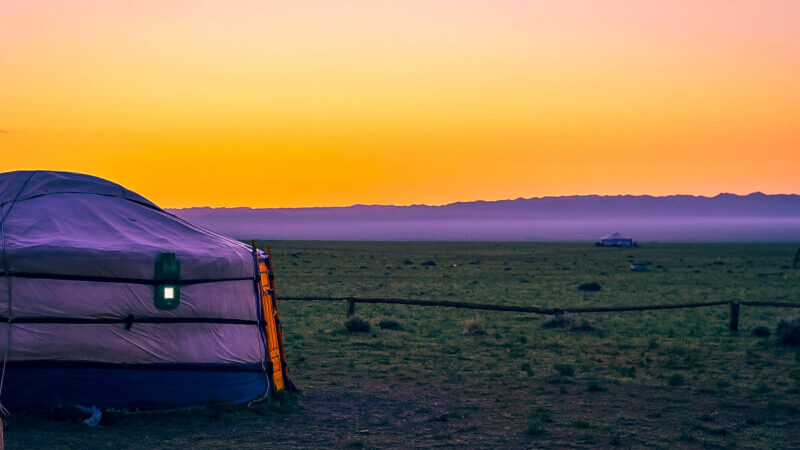
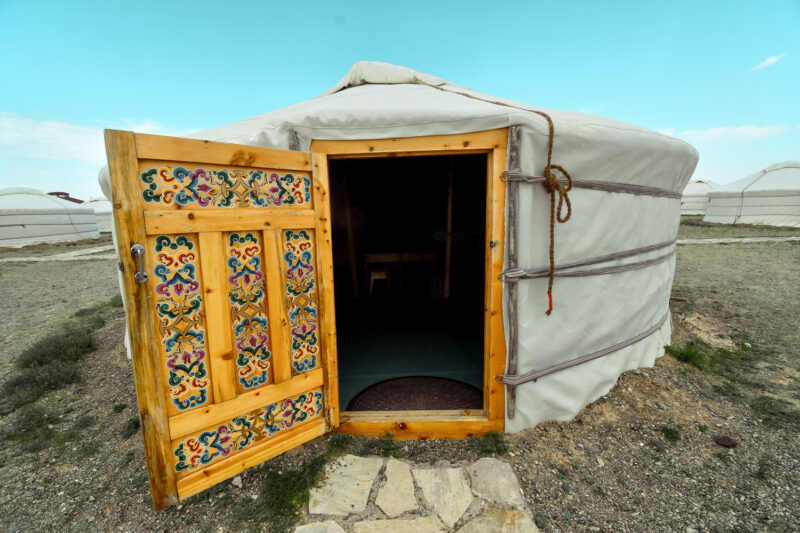
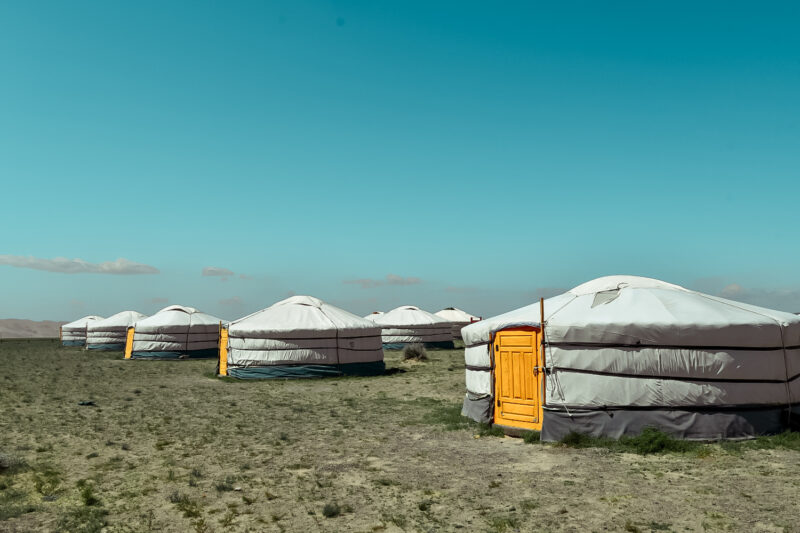
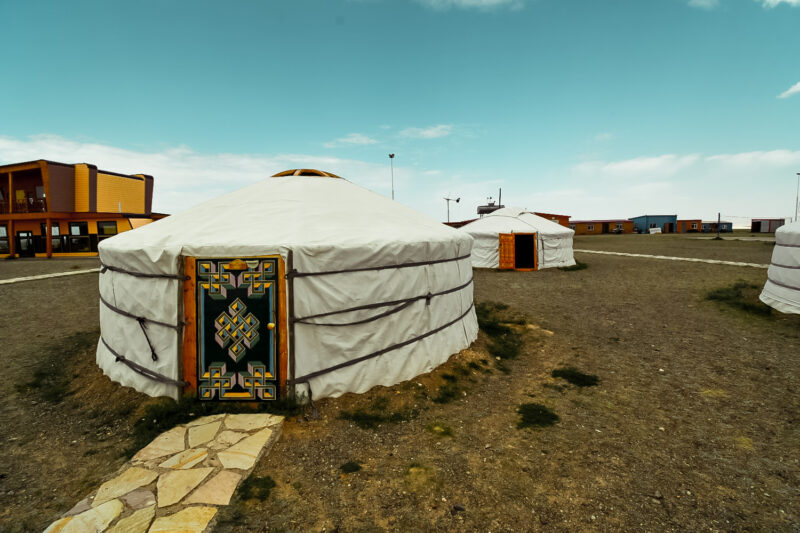

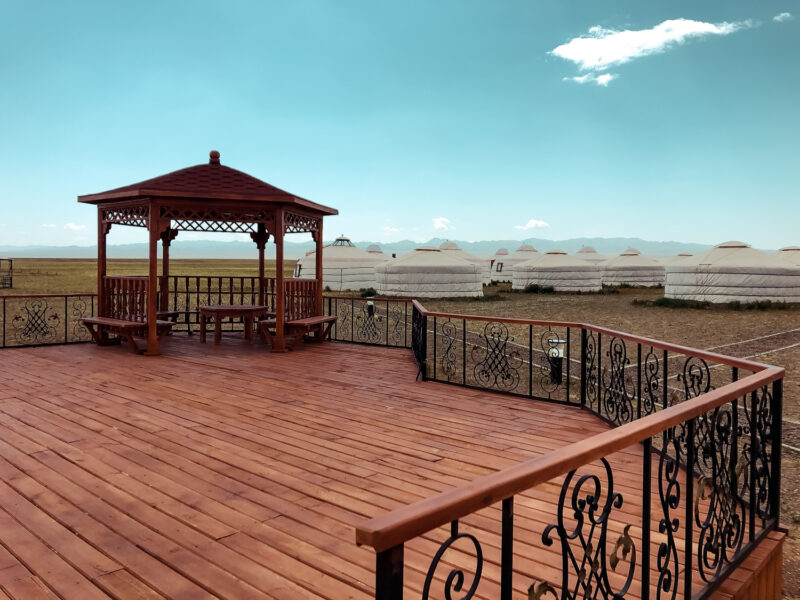
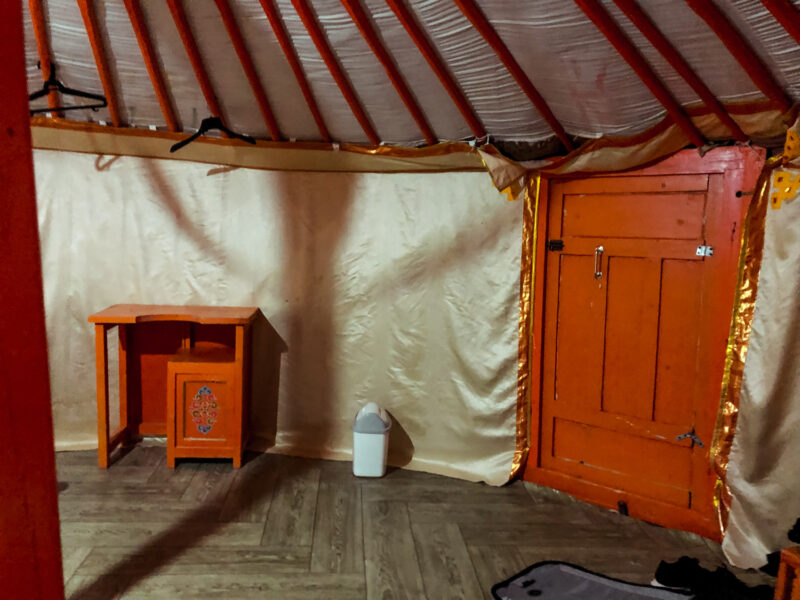
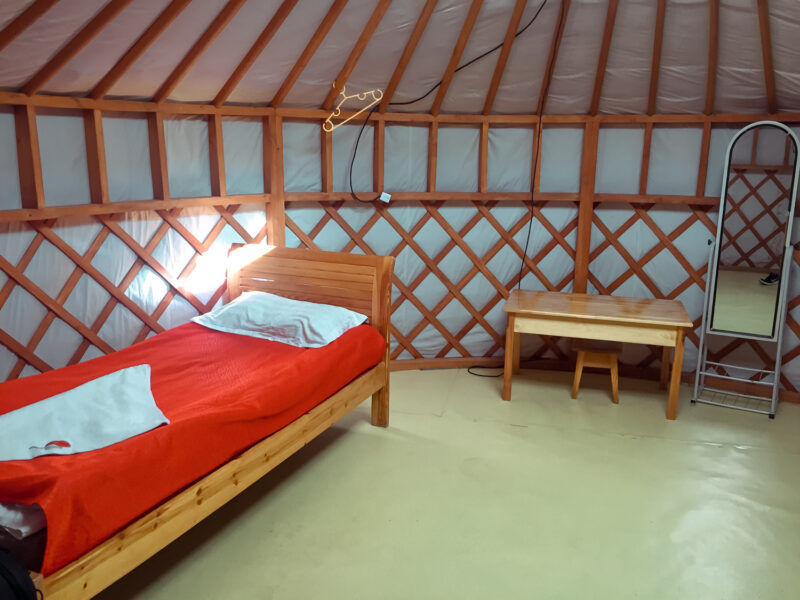
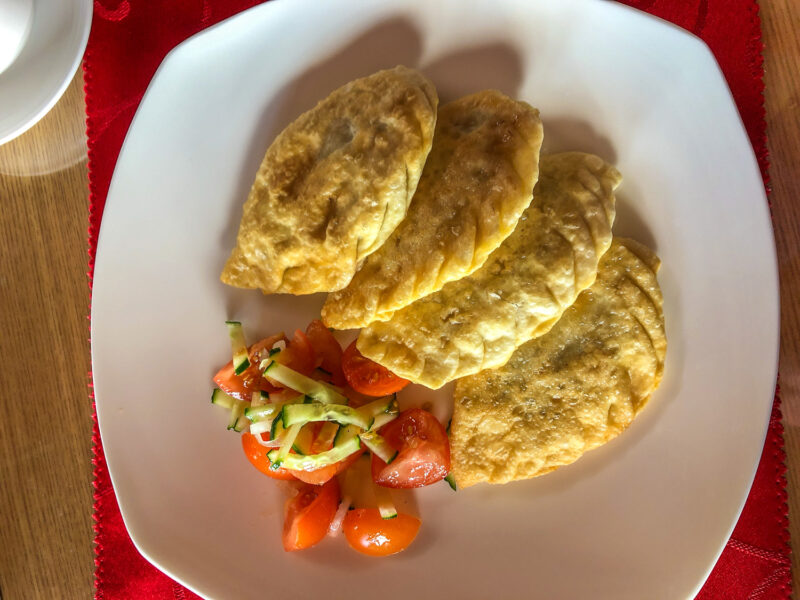
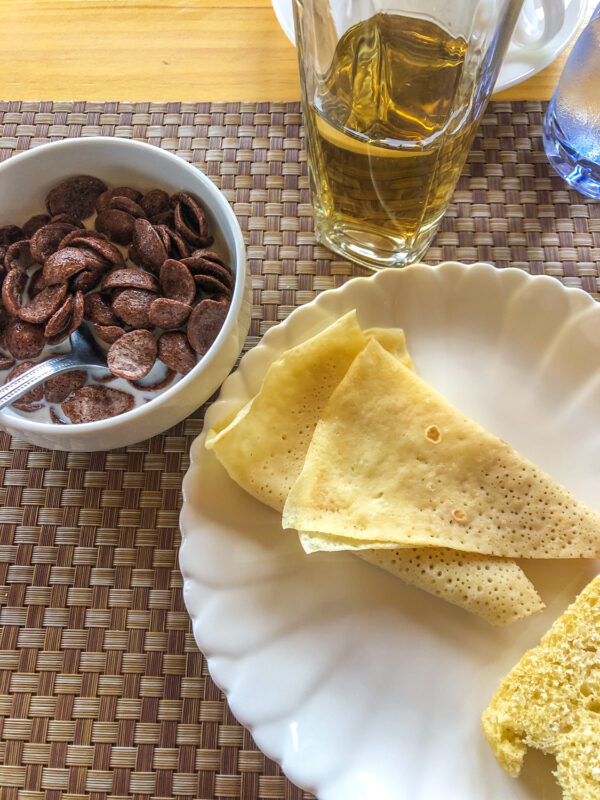
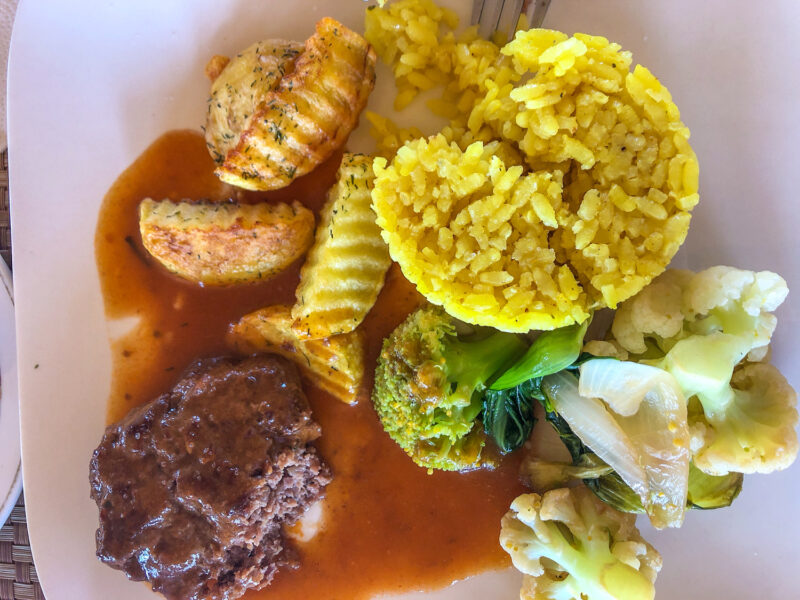
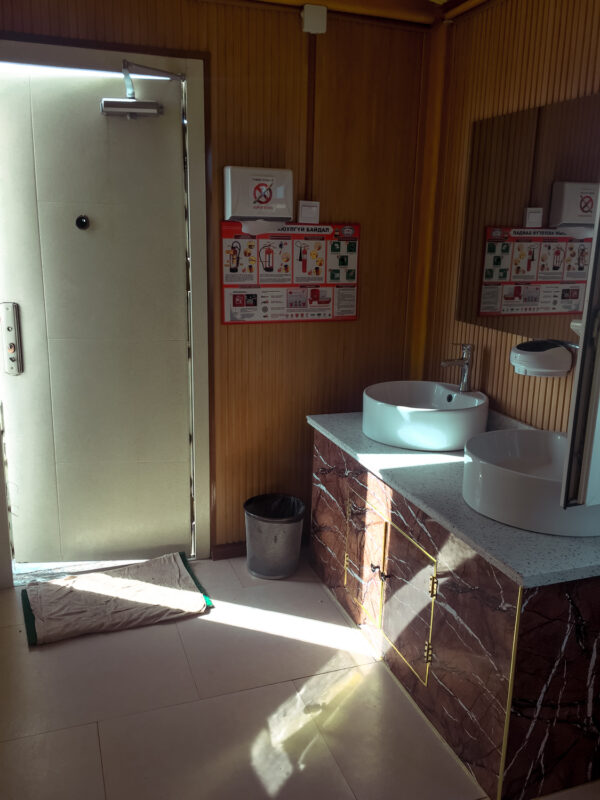
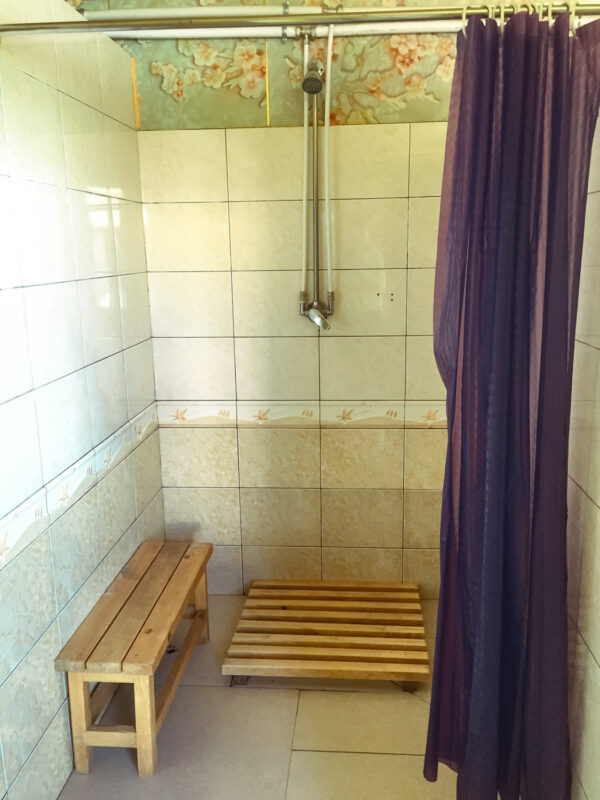
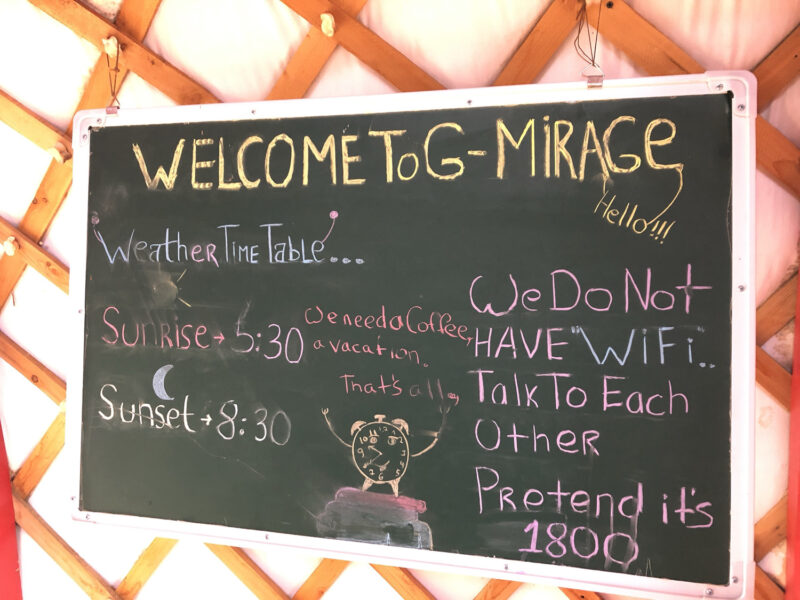
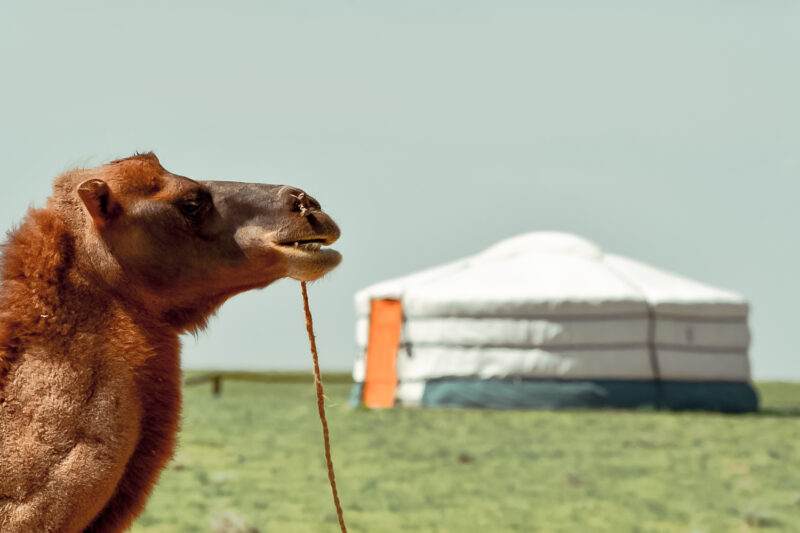
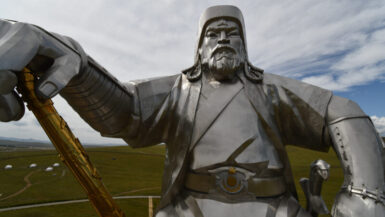
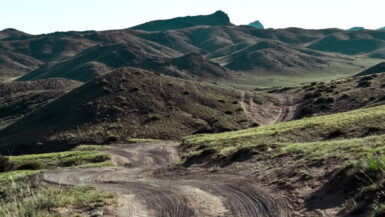
[…] Camia Wreck by Amy Dodd […]
[…] was solo traveling, but saw a couple of other travel agencies at the airport and at the variety of Ger Camps that we stayed […]
[…] is a ger that had fermented horse milk – a boozy drink to drink. This drink a majority of Mongolians […]